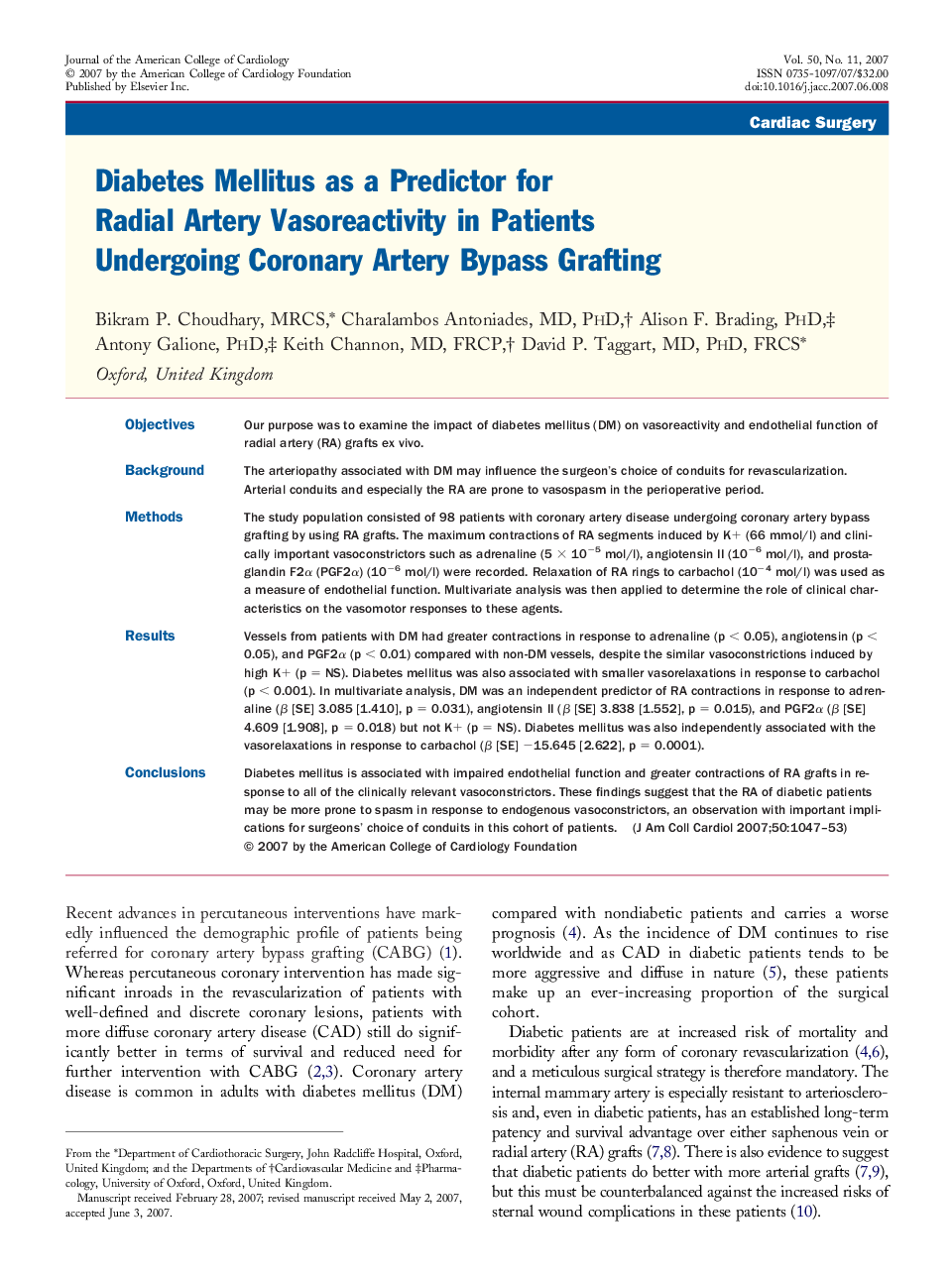| Article ID | Journal | Published Year | Pages | File Type |
|---|---|---|---|---|
| 2952954 | Journal of the American College of Cardiology | 2007 | 7 Pages |
ObjectivesOur purpose was to examine the impact of diabetes mellitus (DM) on vasoreactivity and endothelial function of radial artery (RA) grafts ex vivo.BackgroundThe arteriopathy associated with DM may influence the surgeon’s choice of conduits for revascularization. Arterial conduits and especially the RA are prone to vasospasm in the perioperative period.MethodsThe study population consisted of 98 patients with coronary artery disease undergoing coronary artery bypass grafting by using RA grafts. The maximum contractions of RA segments induced by K+ (66 mmol/l) and clinically important vasoconstrictors such as adrenaline (5 × 10−5mol/l), angiotensin II (10−6mol/l), and prostaglandin F2α (PGF2α) (10−6mol/l) were recorded. Relaxation of RA rings to carbachol (10−4mol/l) was used as a measure of endothelial function. Multivariate analysis was then applied to determine the role of clinical characteristics on the vasomotor responses to these agents.ResultsVessels from patients with DM had greater contractions in response to adrenaline (p < 0.05), angiotensin (p < 0.05), and PGF2α (p < 0.01) compared with non-DM vessels, despite the similar vasoconstrictions induced by high K+ (p = NS). Diabetes mellitus was also associated with smaller vasorelaxations in response to carbachol (p < 0.001). In multivariate analysis, DM was an independent predictor of RA contractions in response to adrenaline (β [SE] 3.085 [1.410], p = 0.031), angiotensin II (β [SE] 3.838 [1.552], p = 0.015), and PGF2α (β [SE] 4.609 [1.908], p = 0.018) but not K+ (p = NS). Diabetes mellitus was also independently associated with the vasorelaxations in response to carbachol (β [SE] −15.645 [2.622], p = 0.0001).ConclusionsDiabetes mellitus is associated with impaired endothelial function and greater contractions of RA grafts in response to all of the clinically relevant vasoconstrictors. These findings suggest that the RA of diabetic patients may be more prone to spasm in response to endogenous vasoconstrictors, an observation with important implications for surgeons’ choice of conduits in this cohort of patients.
